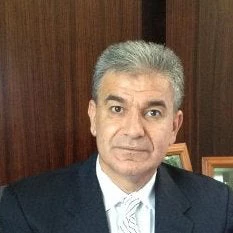
Today in Sana’a, the international community and the Government of Yemen once again came together to track progress on Yemen’s transition and the agreements between the country and its donors. The 2012 peace initiative determined the transition to include a national dialogue bringing together a broad geographic and political cross section of the country (this is already underway), the drafting of a new constitution, and new elections. All of this is meant to be completed by February, 2014.
The meeting today was an opportunity to assess the delivery of aid pledges, track the government’s implementation of commitments under the Mutual Accountability Framework, and prepare the way forward – including concrete steps that the government and donors need to take between now and a high-level donor conference planned for September.
Progress on all three fronts – economic recovery, donor commitments, and reforms undertaken by the government – are essential for Yemen to move forward.
So where do things stand today?
In March, I was pleased to report that the Yemeni economy was beginning to stabilize, with inflation being brought under control and a rise in foreign currency reserves. These developments created the underpinnings for an economic recovery. This stabilization has continued in the last quarter and we are beginning to see some signs of growth in the economy.
But while these macro-level improvements are essential to restart growth, their effects have yet to be felt by far too many Yemeni citizens, 50 percent of whom still live below the poverty line. Disruptions to public services, including all too frequent power cuts across the country, are fraying the nerves of Yemenis and having a real impact on investments and the business climate.
On the donorside, there has been progress as well. In March I also reported that that Saudi Arabia and the World Bank had delivered on most of their commitments. I’m happy today to add most OECD countries, as well as Kuwait, to the list. By the next Friends of Yemen meeting in September we hope to add delivery of commitments from Qatar and the United Arab Emirates as well as Italy and Spain.
Overall, of the $7.9 billion pledged to Yemen, $2 billion has so far been disbursed, while $6.7 billion (85%) has been allocated and $3.5 billion (45%) has been approved by respective donors and the Government of Yemen.

While these commitments are good news for the process, it is essential that the remainder of the pledges is not only allocated, but that donors ensure that the money is disbursed and starts reaching the intended beneficiaries as quickly as possible.
On the side of the Government of Yemen, there has been some progress. The appointment of an executive director to the MAF executive board is an important step. This body will allow the government to successfully manage these funds and undertake the reforms to which it has committed. By September, we should see the formation of the full executive bureau of the MAF.
The government’s commitment to the Extractive Industries Transparency Initiative (EITI) is another important step that will ensure regular reporting on the industry. International experience has shown that EITI creates greater transparency and accountability, both of which are badly needed for this key sector of the Yemeni economy.
Another step in the right direction is the creation of a three-judge anti-corruption court. And while these steps are all commendable, the Government of Yemen still needs to make much deeper and more sustained progress on reforms if it is to fulfill its commitment to its citizens.
Energy sector reforms are fundamental to this promise. Securing the country’s electricity supply from saboteurs is one element, but long-term change requires a new approach to energy policy. Capacity constraints must be addressed through a national strategy that rationalizes energy expenditures. Any reform to the sector must include reforms to the country’s energy subsidy program, which grabs one quarter of the national budget, with almost all of the benefits going to the very wealthy. These expenditures would be much better spent investing in health and education or in Yemen’s social welfare fund.
Finally, both international donors and the Government of Yemen also committed to a calendar of priority policy reforms to help Yemen achieve economic growth through private sector-led job creation, transparency, and assistance for the most vulnerable. These are concrete actions that can be taken in advance of the next meeting in September.
Today in Sana’a we saw progress, but we remain humble at the challenge ahead. The commitments that were agreed on today are essential, but so is a redoubling of efforts. I will report back on our progress next September.


Join the Conversation